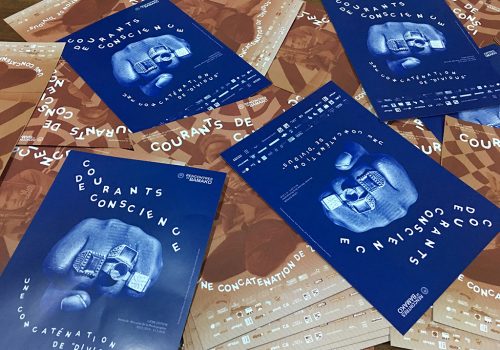For this 12th edition, the Bamako Encounters, the internationally renowned biennial history dedicated to photography and video art on the African continent, has decided to use the fists adorned with rings by the Malian photographer Fototala King Massasy as the main communication image from the Tenir series (“Hold up”). I believe that this starting point will perfectly illustrate from the series. I believe that this starting point will perfectly illustrate the feeling of this edition, since indeed, no matter the context of the country – which we know difficult, the event holds and remains standing despite the obstacles that the organization of such an event in Mali induce. A punchy edition, an edition that decided to bang its fists on the table, with no less than 85 artists and collectives from all over Africa and its diasporas, thus doubling the number of projects exhibited during previous editions. The biennial which celebrated its 25th anniversary this year has decided to be ambitious, both from a technical and a creative point of view. A challenge marked by an impressive number of “first times” which punctated the route of the organizers with pitfalls but nevertheless managed to meet the challenge!
Entitled “Streams of conscience”, in reference to the eponymous 1977 piece by Max Roach and Abdullah Ibrahim, this edition was designed by the general commissioner Bonaventure Soh Bejeng Ndikung surrounded by a team of young curators composed of Aziza Harmel, of Astrid Sokona Lepoultier and Kwasi Ohene-Ayeh, and artistic advisers Akinbode Akinbiyi, Seydou Camara and finally scenographer Cheick Diallo. The general delegate of the biennale, for the first time, is no longer Samuel Sidibé, former director of the National Museum of Mali and emblematic figure of culture in Mali, but Igo Diarra director of the Medina gallery in Bamako.
The floods of thoughts, movements, memories, claims and dreams of each of the artists exhibited, thus carried us through the exhibitions, with poetry and commitment throughout the professional days which took place from November 30th to December 4th 2019.
The opening day marked by the symbolic presence of the President of Mali, Ibrahim Boubacar Keïta and the Minister of Culture N’Diaye Ramatoulaye Diallo, testifies to the historicity of the event organized for the first time by the Ministry of Culture in Mali, and no longer by the Institut français, which, this year, is taking the position of supporting the biennial and no longer co-organizing it, the full powers returning to the country which has hosted this event for 25 years. And even if it is true that culture is probably not the first interests of the Malian population who daily faces complex situations, this organizational change is a strong symbol of the taking possession of the event by Malians. The presence of the young girls from the Ba Aminata Diallo High School (which hosts one of the In exhibitions) at the opening but also that of a crowd from the population demonstrates the taking possession and the place this event takes is important in the city. The event seemed to me to be a source of pride for a large number of people, a tool to testify to Bamako’s resistance to the difficult times in the country.
The days that followed were remarkable for the large number of actors present and the range of possibilities that their presence opened up. Journalists, exhibition curators, institutions, artists and amateurs from all over the world came to discover this new edition, thus giving a real meaning to the name “Encounters”. Through formal and informal exchanges, in particular thanks to the public program and the numerous moments of organized meetings, many subjects could be tackled such as awareness centered on women in photography, representation, violence and constant evolution of our (political) landscape, and of the use of photography as a critical and powerful tool in the diasporas…
To testify to the importance of the collective, it is obvious that the will of the team was also to enhance the territory and stay as much as possible with local production. Almost all of the prints were made for the first time in years in Mali by the Photography Training Center and the African House of Photography, thus having an impact not only on the spreading of culture in Mali but also on its economy by giving a renewed financial life to these institutions.
The reflection around the challenge of mobilizing the Malian population within cultural spaces was also evident. Cultural places but also places of common life were invested such as the street exhibition by Youssouf Sogodogo organized by Black Shade Projects at a city round-about, the Lycée des Jeunes Filles Ba Aminata Diallo with the exhibition Musow Ka Touma Sera by the curator Fatima Bocoum, the Cinema El Hilal where one could discover photographs of the South African artist Jodi Bieber or the residences of three Malian families through the project “In the nooks and crannies of Bamako: Photography in family homes” which offered visitors a journey within their family albums.
With 11 official exhibition venues across the city and numerous exhibitions in the OFF program, Bamako once again confirms its quality as an inevitable crossroads of African photography.
Anna Reverdy
















